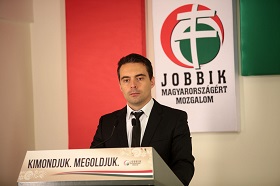On October 2, 2016, a fairly gloomy day for Hungary, the overwhelming majority of Hungarians voted against EU-imposed quotas on the number of migrants to be distributed across EU members. But with the turnout too low – the referendum would have been valid if at least 50% of the voters had cast their ballots – the will of the Hungarian people failed to assert itself as an uncompromising stance against Brussels for which Hungary’s government hoped.
The referendum held on October, 2 demonstrated a unique combination of a surprisingly high unanimity among voters, a low turnout and victorious rhetoric of the ruling party, Fidesz. The very wording of the question that appeared before Hungarians on referendum ballots is curious: “Do you want the European Union to be able to mandate the settlement of non-Hungarian citizens in Hungary without the consent of the National Assembly of Hungary?” As a result, 98.3% of voters who cast ballots voted against unilateral EU-imposed measures, as well as the resettlement of 1,294 asylum seekers from refugee centers in Italy and Greece. Meanwhile, the impressive unanimity notwithstanding, Brussels is out of the woods for now: the results were deemed invalid because of the insufficient turnout.
No-shows
The final voter turnout across the country averaged 43.4% (3,589,888 people out of the total 8,261,394 voters). The highest turnout was seen in the country’s western counties – Vas and Gyor-Moson-Sopron (52.01% and 51.11%, respectively). However, with the spread of ballot spoiling practices, even in those counties the share of valid votes was below 50%. On average, 2-3% of the total number of ballots were invalidated, with the proportion reaching 5% in Budapest boasting the most liberal mindset. In the capital of Hungary, where the turnout was incidentally the lowest in the country, 97.9% of voters rejected the migrant quotas. De facto, it means that out of 1.5m eligible voters in the capital, Hungary’s most cosmopolitan state, just a little over 10,000 voters voted “for.”
Aside from Budapest, no other county in Hungary had less than 98% of votes against the quotas. Furthermore, the poll revealed the lack of striking difference in how the votes distributed across Hungarian urban and rural districts (98.2% and 98.4% votes “against,” respectively). Notably, the total number of votes “against” roughly corresponds to the number of votes for Hungary’s two leading (right-wing) parties Fidesz and Jobbik in 2014. Coincidentally, the two parties were the most active opponents of migrant settlement and what they perceive as EU-imposed measures.
Based on the results, it is possible to assume that only the supporters of right-wing parties prone to opposing EU policies and migrant resettlement plans took part in the vote, while more liberal-minded voters stayed away. However, the actual situation is different: supporters of socialist parties also voted against the measure, while some right-wing voters approved of it. The referendum’s major weakness was the lack of awareness among citizens who they were voting for and against. It was unclear how the vote related to the political line of Viktor Orban’s party Fidesz. Armed with the firsthand knowledge of the migrant crisis of 2014—2016, Hungary is generally opposed to migrant resettlement. Nine out of every 10 Hungarians frown on even the free movement of refugees across Europe and their resettlement in their country.
Just like other countries opposing EU migrant quotas, Hungary barely has enough funds to cater to the needs of its own people, yet, not every Hungarian wants his or her vote “against” be regarded as approval of the government’s policies on education, healthcare and financial policy. According to the recent public opinion polls, two thirds of the population of Hungary see the ruling party as corrupt.
The referendum’s “glorious failure” is likely to have a limited effect on Hungary’s political life. Obviously, Viktor Orban, who had been voicing confidence for months and months (as recently as September, 29 he admitted that the validity of the referendum would have no political importance if people rejected the quotas) that the poll would be a success, will suffer reputational losses. However, the latter are unlikely to be dramatic and will have little effect on the results of the parliamentary election of 2018. The poll results play directly into the hands of the far right political party Jobbik (The Movement for a Better Hungary), whose leaders hailed the failure of Viktor Orban’s policy and a recklessly held referendum shortly after the voting results became official. Furthermore, the party called for the prime minister to stand down immediately. Jobbik can also turn to its own advantage the fact that the overwhelming majority of the population showed their disagreement with the EU policies, while simultaneously condemning the ruling party for wasting public funds.
The socialist party of Hungary, or whatever is left of it anyway, has also interpreted the referendum results as a telltale sign of changes to come. Former prime minister of Hungary Ferenc Gyurcsany stated that the failure of the ruling party calls for Hungary’s opposition to unite. The problem, however, is that the invalidity of the referendum does not actually equal the victory of the liberal forces in Hungary. If anything, October 2016 events have shown that up until the parliamentary election of 2018 Hungary’s political life will be dominated by the confrontation between its two right-wing parties, Fidesz and Jobbik.
The price of failure
The referendum cost Hungary almost 5bn Hungarian forints (16m euro, or 1.14bn roubles). To top it all, the country’s ruling party spent another 8.6bn forints (28m euro, or a little under 2bn roubles) on an impressive outreach campaign. The campaign included billboards across the country’s cities saying that “1m people from Libya alone were looking to move to Europe,” “since the outbreak of the migration crisis, the rate of violence against women had gone steeply up,” “Paris terrorist attacks were carried out by refugees” or “Brussels wants to settle enough refugees in Hungary to fill an average Hungarian town.”
As a result, the government spent an amount comparable to an annual fish industry budget on a referendum the results of which have been negated by a low turnout. In an even more paradoxical move, the government of Hungary promised to respect the will of the people by adopting amendments to the country’s constitution, which immediately raises the question of whether the referendum had at all been justified.
A mere two days after the referendum, the government of Hungary gave a more detailed statement of what the changes to the constitution would be like. Viktor Orban intends to redraft four paragraphs of the country’s main law, which is apparently to take place as early as early November as soon as the motion is approved by the parliament. The main change will involve a ban on mass resettlement of non-Hungarian citizens without the consent of the Hungarian government. In addition, the amendments will also establish that Hungarian authorities will consider migrants on a case by case basis, which removes the remaining shreds of doubt that Budapest is poised to resolve the migrant issue on its own. Notably, the decision has no immediate effect on the heart of the matter: Hungary is in no way refusing to accept migrants, but rather resents quotas and other measures imposed by Brussels (against the will of Budapest). However, it still leaves the door open for Hungary to strike an agreement with the EU and present the decision as being in its national interest.
It had been initially presumed that the referendum on EU-imposed migrant quotas was to affect seriously the international political arena. Western analysts even suggested that the results of the referendum could influence the future of the entire European Union, traditionally invoking a possible rapprochement between Hungary’s prime minister and Russia, the emergence of a “non-liberal” state in Hungary and a possible reappearance of authoritarian conservative regimes within Central Europe after the fashion of the 1920s. As it is, however, the results will primarily affect Hungary’s internal policies. It is highly doubtable that the results, as Hungary’s Prime Minister Viktor Orban would claim, will become “a powerful weapon” in the talks with Brussels. However, as tensions continue to subside, a Brussels-Budapest agreement will become likelier.
Pursuant to EU Council Decision 2015/1601 dated 22 September 2015, Hungary was to accept 1,294 refugees. The European authorities tried to sweeten the pill by assigning a compensation of 6,000 euro for each refugee accepted. When Hungary voted against the decision and announced it would hold a referendum on EU migrant quotas, Brussels threatened to introduce “solidarity fines” (a term worthy of George Orwell), which, if in place, would mean Hungary had to pay 250,000 euro for each refugee it refused to accept, amounting to a total of 323.5m euro.
Since the “solidarity contributions” clause could be used against any country aside from Hungary, other Central European countries condemned the concept. Minister of Foreign Affairs of Poland Witold Waszczykowski who opposes migrant quotas referred to it as an April Fool’s Day idea. Still it is unlikely that Hungary or any other EU state will have to pay the contribution.
At its Bratislava summit in September 2016, the European Commission tempered its criticism against the Visegrad Group (Hungary, Slovakia, Czech Republic and Poland) who has consistently opposed mandatory migrant quotas for the past few months. The Bratislava Declaration adopted at the summit contains only a vague urge to continue efforts to broaden the EU consensus on long-term migration policy. The confidence with which Central European leaders are now talking about the inapplicability of the quota system in the EU allows to conclude that the mandatory and unavoidable nature of the quotas will be revisited. The next EU summit scheduled for 20—21 October 2016 will focus on migration matters and may just become a platform for the convergence of opinions of all parties in disagreement.
The migration crisis saga is destined to die down sooner or later in Hungary. Against the backdrop of declining refugee flows (by a third this year) and the total exhaustion with the issue, Budapest and Brussels are set to gradually move toward a rapprochement. Hungary will most likely take in refugees, possibly, even all of the 1,294 people, in exchange for concessions outside of migration policy matters. Specifically, immediately before the referendum, media reported rumors that Budapest may finally be given green light to go through with the Paks Nuclear Power Plant extension project which Brussels have been trying to push back citing anti-Russian sanctions, as well as with the Budapest-Belgrade railway line reconstruction project. If this is the case, the expenses on the referendum may well be justified.







